Answer Man (via Reddit): Does anyone know anything about that giant opening in the ground behind Walmart on Campbell?
This question was posted March 25. I read the 20 responses and decided to dig a little deeper.
First of all, there are two Walmarts on Campbell. We're talking about the one at 3315 S. Campbell Avenue. The one at Grand and Campbell is a mere Walmart Neighborhood Market.
The one on South Campbell opened July 13, 1982 in the brand-new South Oaks Centre; it was the fourth Walmart in Springfield. It's now a supercenter.
Company founder Sam Walton was here on opening day. He died in 1992.
It's important to note that even before this Walmart opened, there were flooding problems in the area. At the time, this was near the frontier of Springfield's southwest boundary.
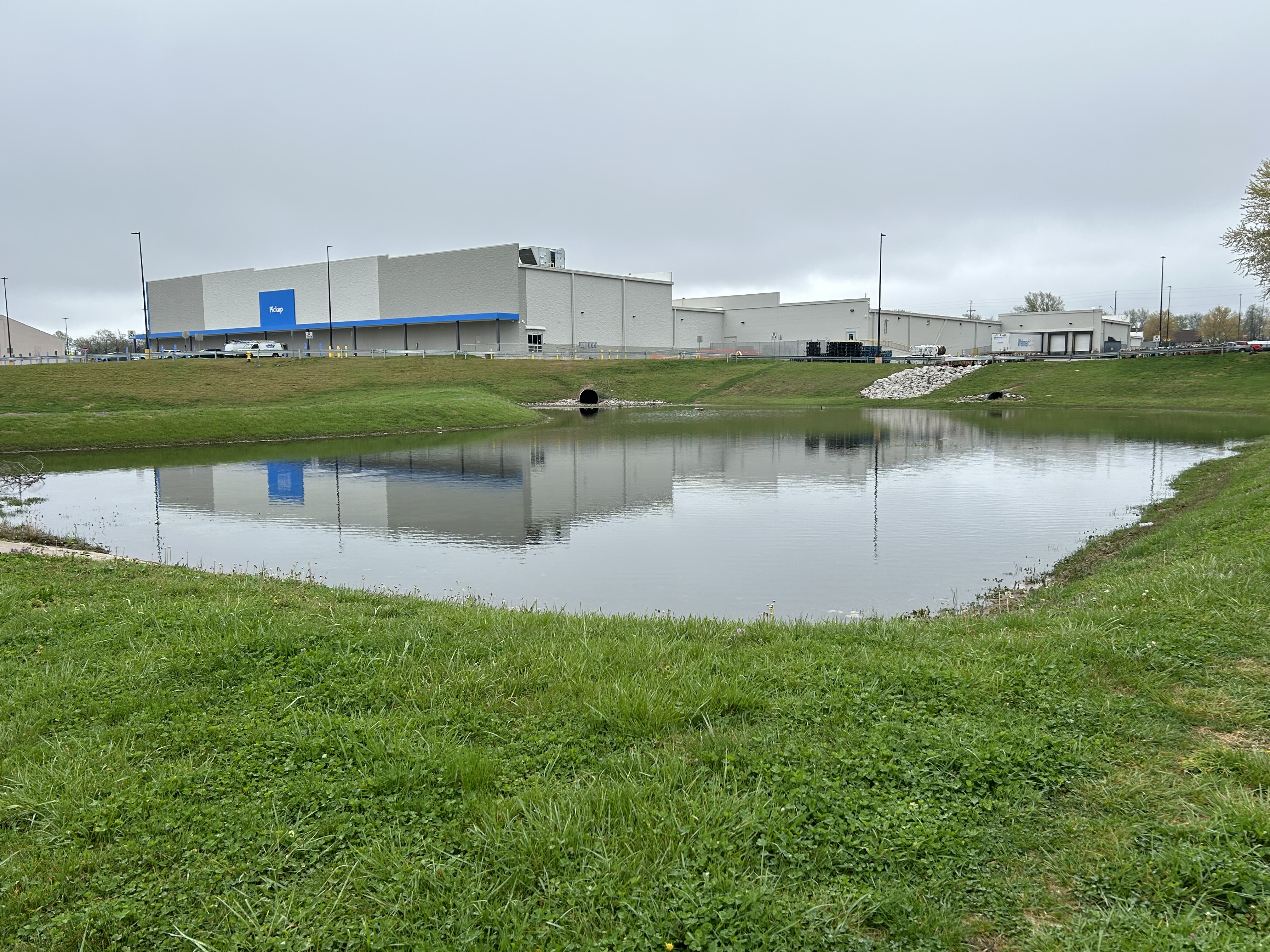
Some nearby residents complained the Walmart would make flooding worse.
According to a Jan. 15, 1982 story in the Springfield News-Leader:
Dorothy Snow, 516 W. Erie, recommended the area's drainage problems be studied by the city. There already is water down Erie Street, she said.
In hindsight, they did get worse. But there was more building and construction than just Walmart.
Erie Street, where Dorothy Snow lived, is north of the Walmart and runs east/west.
A history of flooding and a lot of sinkholes
I've learned that the history of this part of southwest Springfield includes a lot of flooding. In addition, there are several sinkholes nearby.
The retention pond behind Walmart now connects via an attractively landscaped greenway with stone walls to a sinkhole on a large tract 0.4 miles away.

In fact, in the early 1980s residents of the area formed a group called SOAKED.
Ready?
Springfield Occupants Actively Knocking Erie's Deluge.
In a 1983 story in the News-Leader, then public works director Dave Snider was quoted as saying: “That area needs some sort of storm drainage pipe from Battlefield Road all the way to the sinkhole in the 3300 block of South Ferguson Avenue.”
(We now know, 10 years after Snider said this: The area of the Ferguson sinkhole he mentions would be overwhelmed after days of rain, with floodwaters reaching the eaves of some homes.)
In that same 1983 story, city engineers reportedly met with the South Oaks Centre developer and agreed to modify a retention pond behind the store so stormwater would be held longer.
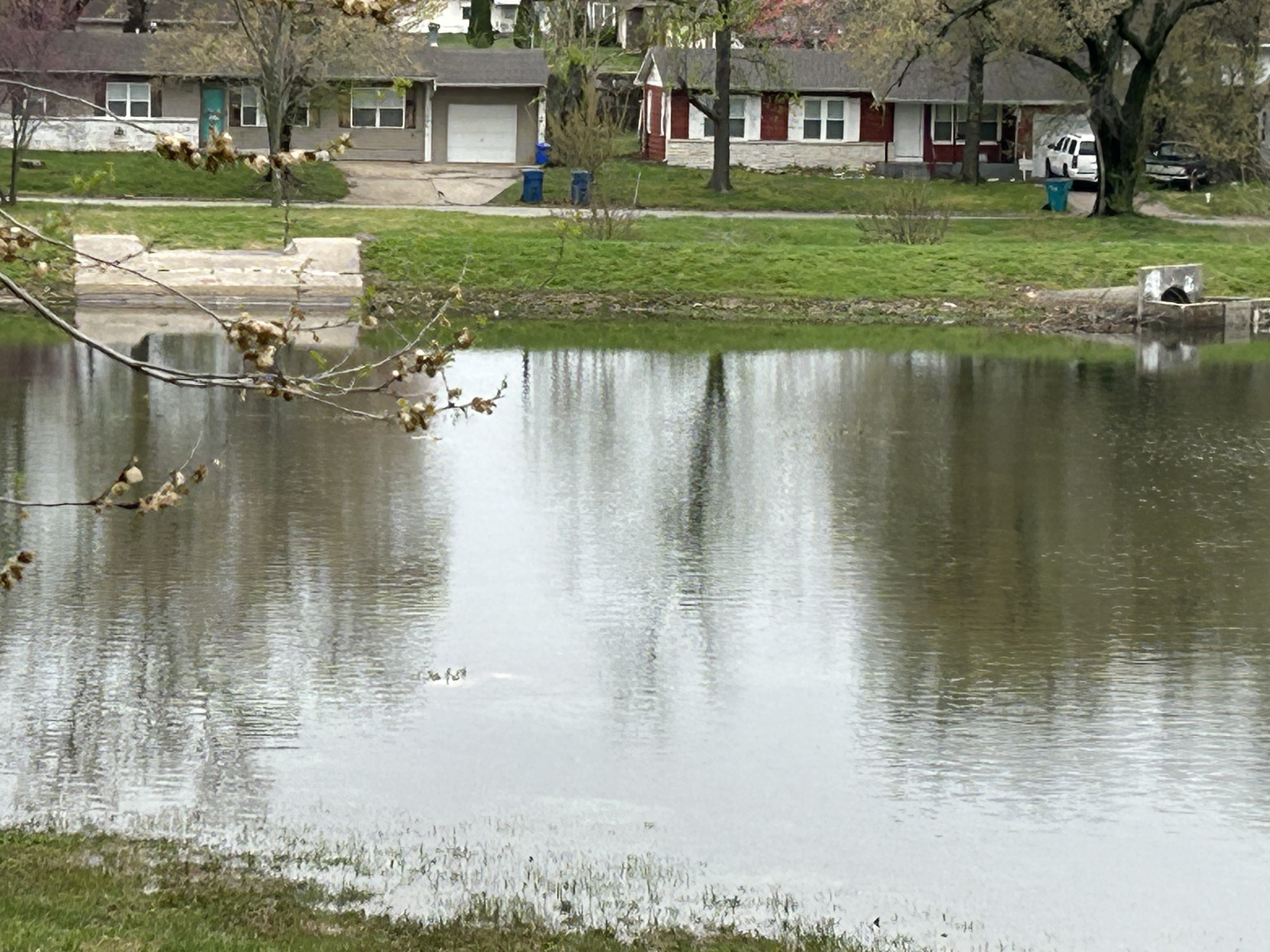
In 1984, city voters OK'd $5.2 million to improve drainage problems, including those near the Walmart.
The Great Flood of September 1993
In September 1993, Greene County was hit with days of nonstop rain. It resulted in flooding throughout the county, but the most serious was near a large sinkhole north of Walnut Lawn near Ferguson and Franklin avenues.
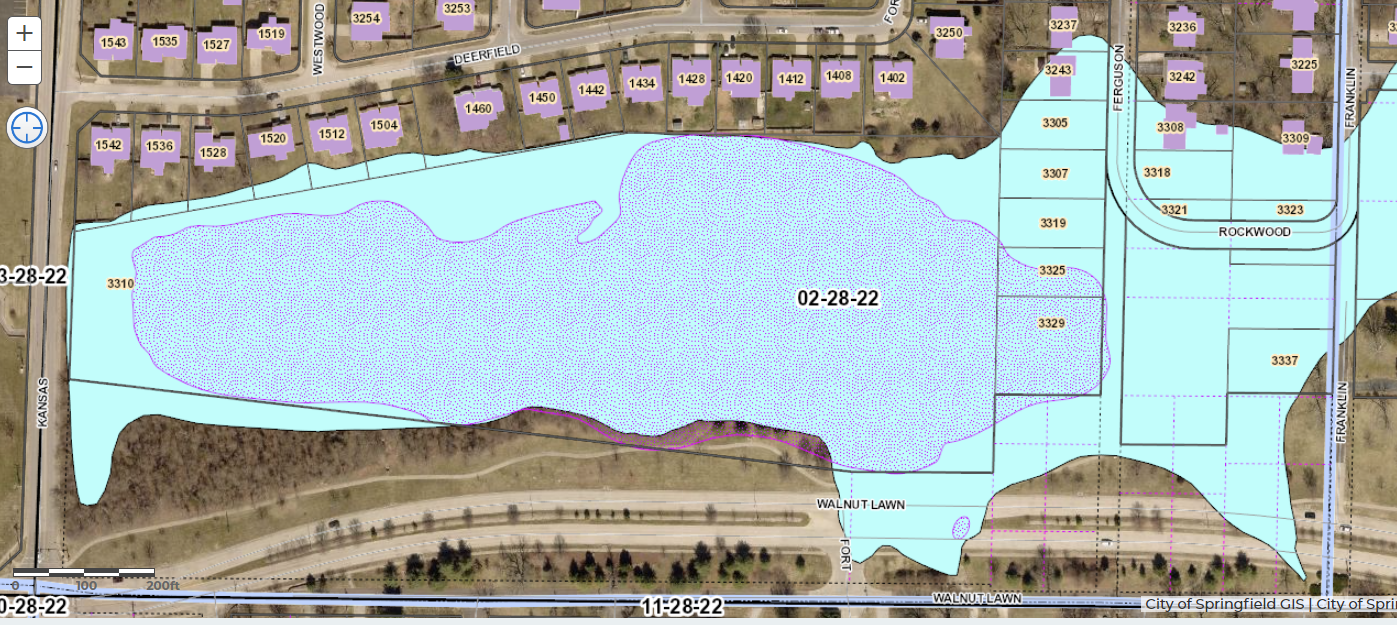
Several of the homes had water up to the eaves. Springfield fire department employees used water-rescue craft to get to some residents. No one was injured.
These homes were five blocks west of Walmart, but that is not to say that the construction of Walmart caused this flooding. Construction boomed in the area in the years after the Walmart opened in 1982.
Some of the homes damaged were actually in Greene County when built in the floodplain. Only later were they annexed into the city. Some where built on land that only later became part of the known floodplain.
The city eventually purchased 16 homes damaged in the flood. It used $500,000 of city funds and $500,000 from the Federal Emergency Management Agency.
The area is 12.4 acres and now serves as a park and an important water retention basin for the area.
Seven months after the flood, a News-Leader editorial, published on April 3, 1994, cautioned the city about relying on sinkholes to prevent serious flooding:
Springfield is a community that has for too long relied on nature to provide the natural drainage that a modern storm sewer system must provide in many communities. Sinkholes, natural geological bathtubs that collect runoff like a tub without a plug, are increasingly being overwhelmed because of commercial and residential development.
Missouri one of several states with many sinkholes
A sinkhole is a cavity that collects water and connects with an underground drainage system.
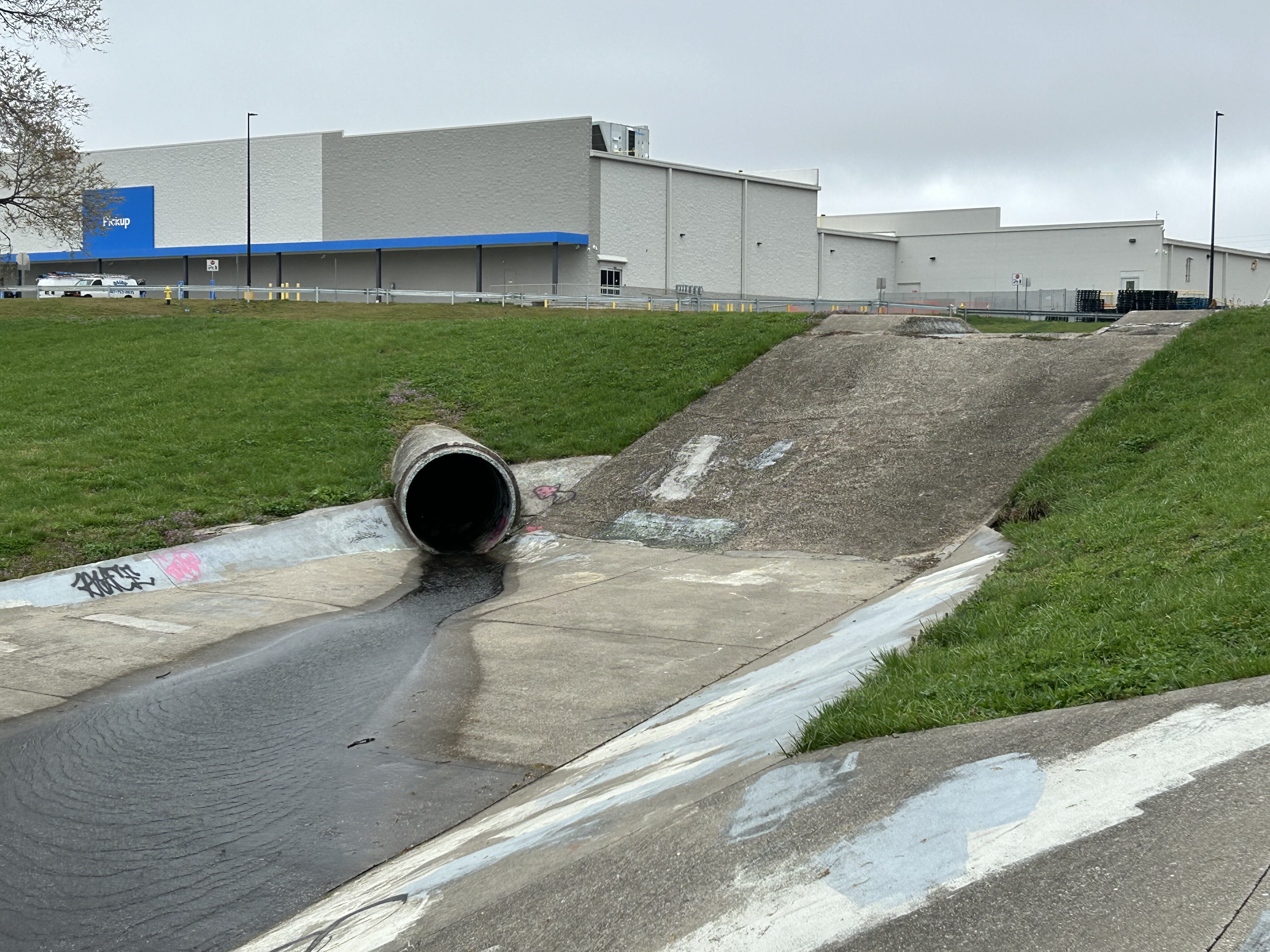
According to the American Geosciences Institute, sinkholes have both natural and artificial causes. They occur most often in places where water can dissolve the bedrock (especially limestone) below the surface, causing overlying rocks to collapse.
The states with the most sinkholes are Missouri, Florida, Texas, Alabama, Kentucky, Tennessee and Pennsylvania.
Sinkholes are common in what geologists call “karst terrain,” an area with the types of rock below the surface that naturally can be dissolved by circulating groundwater. The Ozarks is known for its karst geology.
I've read stories that estimate there are at least 1,000 sinkholes in Greene County.
Wakes up to 15-foot sinkhole in front yard
I'm going to jump forward 14 years — to 2007 and a house that once stood at 3248 S. Dayton Ave.
Dayton Avenue is the first street west of the Walmart at 3315 S. Campbell Ave. The houses on one side of Dayton in the 3200 block have backyards abutting the rear of Walmart, as did the house at 3248.
This house was once owned by Cindy Forrest, a rural postal carrier at the time. She lived there with her daughter Brittany.
She woke up one morning in June 2007 and discovered that a 15-foot sinkhole had opened up her front yard. This occurred, she said, two years after cracks first appeared under the house, prompting city engineers to check the property.
What's interesting is that there are three sinkholes in the immediate area of where Forrest's home once stood.

I don't know when the house was razed. I don't think the Earth swallowed it — there would have been a news story.
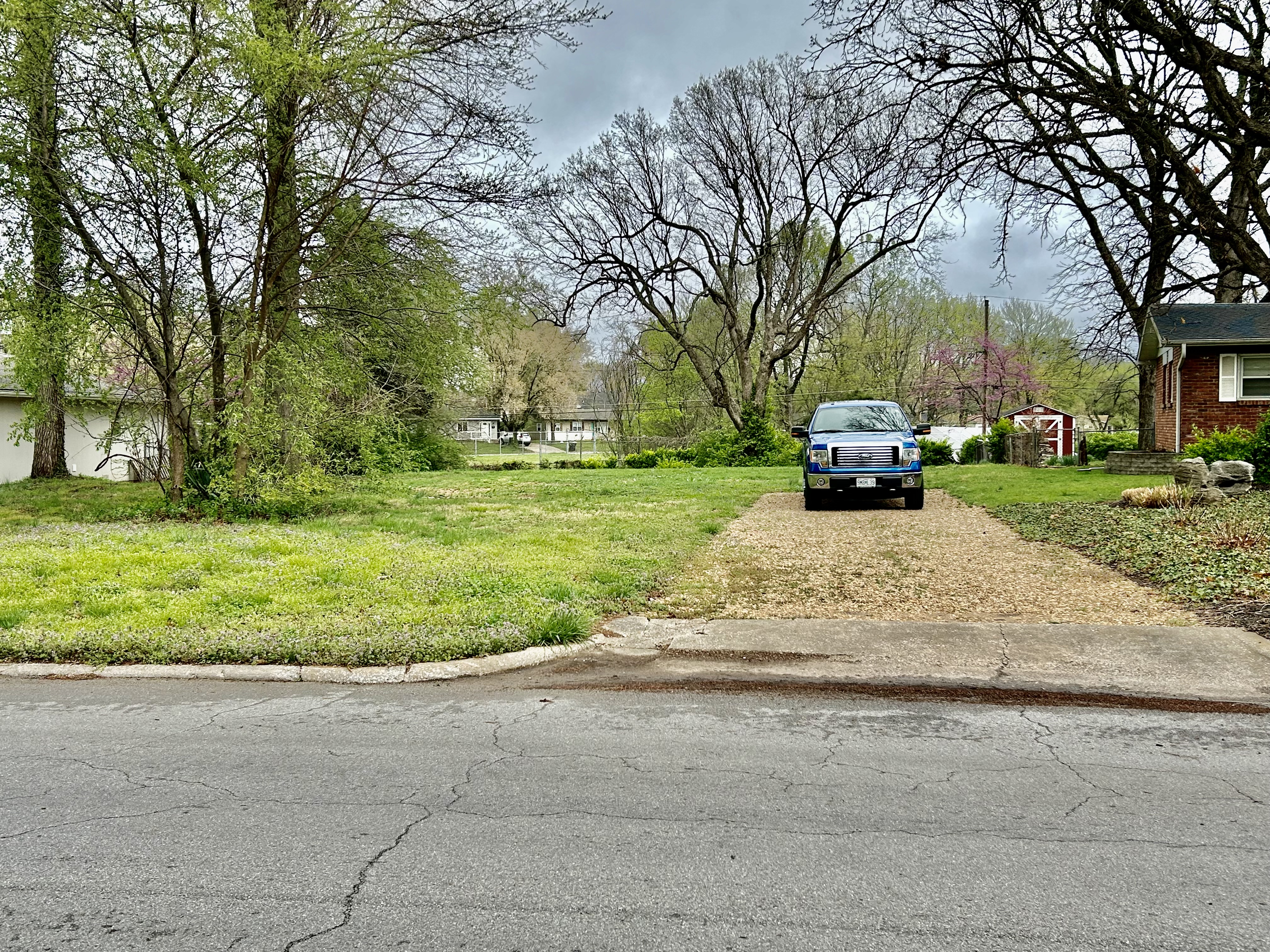
Looking at online property records, the ownership of the house went from Forrest to Wells Fargo Bank in 2011; then to the Department of Veterans Affairs; then to a Christopher Jon Erickson; and in 2014 to the city of Springfield, which owns many other sinkholes in this, the Sink City.
I visited April 2 and took a photo; there is green space where the house once stood.
On the other side of what would have been her backyard fence is the Erie sinkhole — mentioned earlier.
There's a second sinkhole below the pond that is part of Walmart's water retention plan.

A third sinkhole, according to Greene County Assessor's maps, is just to the west of Dayton Avenue — between Dayton and Pinehurst. This, too, is green space today. Only it has a gap of six or seven houses on the street, not just one. I don't if there were once houses there.
Workers went 40 feet into sinkhole
Forrest wanted the city to buy her house, which was sinking, and argued that water flowing under it — between the two sinkholes on either side of her house — was eroding the rock and dirt underneath and causing her own house to sink.
She contended that the city's efforts to maintain the sinkholes — occasionally cleaning debris out — in effect increased the water flow which increased the underground erosion.
The News-Leader ran a story on April 27, 1983, describing the city's cleanup of the Erie sinkhole. The city believed that cleaning debris from the sinkhole might help solve ongoing flooding problems. The story said:
The workmen have gone down 40 feet and can go at least another five feet with little effort, Public Works Director Dave Snider said.
Thus far, the cleanup crews have found tires, buckets, assorted toys, a grocery cart and two 50-gallon barrels. They have also found rocks, twigs, silt and a lot of trash.
This is Answer Man column No. 69.

